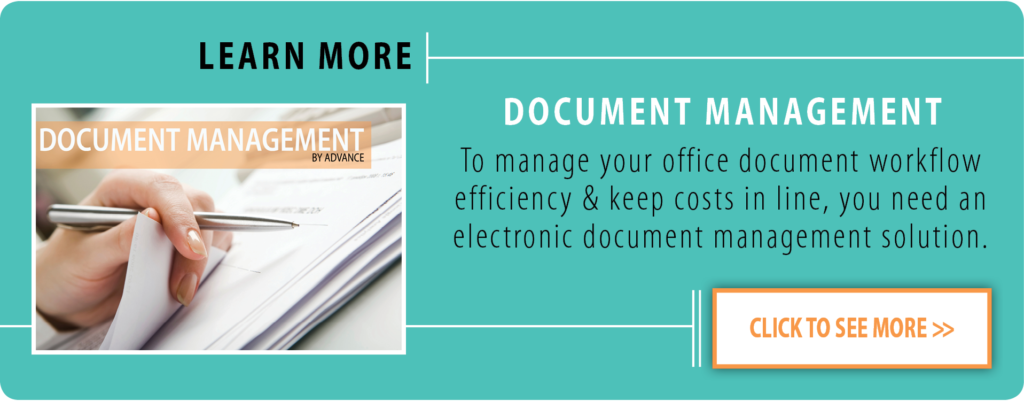Blog
The Stuff
In A Word: Integration
Posted On March 28, 2011 By Scott Guercio
Remember when copiers could only copy? It was a much simpler time back then…… Scratch that. I am not old enough to be starting sentences that way. Copiers that just copied, it actually wasn’t that long ago.
Over the last decade, the copier industry has gone through two major shifts in technology. In the late 90’s, like everything else in the world, analog copy machines were replaced by their digital counterparts. With digital technology, copy machines became devices that could also potentially print, scan and fax, changing their moniker from copier to MFP (Multi-Functional Printer). Companies began consolidating their multiple pieces of hardware into one networked multi-functional device. This strategy presented them with an operational cost savings on service and supplies, and freed up valuable office space.
Click here to learn about how we can help your office safely manage the lifecycle of its documents – from creation to storage.
Around 2004, as MFPs became commonplace, manufacturers began shifting from focusing on b/w output devices, to creating affordable, full color output devices for the typical office. With print on demand, cost effective, full color output, businesses could better market themselves without spending a premium outsourcing.
Currently, the “copier” industry is more concerned with creating efficient business processes than it is with simply creating output solutions. The mantra of many businesses today seems to be, “we need to do more with less.” Companies are looking for ways to streamline operations. They are looking for ways to automate manual processes, and to cut down on the time that critical processes take. They want their biggest asset, their employees, to be more productive and efficient. So, how can a digital copier help with these big picture issues? In a word: integration.
The digital copier in businesses today, is most likely a color multifunctional device. It is used not only for copying, but also faxing, printing and scanning. More importantly, it is a means for workflow. For example, received faxes now come into the MFP electronically and are forwarded as a PDF to email or a shared network folder, instead of printing. Outbound faxes are routed across the network electronically to be sent from the MFP, again without the need for printing them first, or even getting up from a desk. Those documents that originate as paper are scanned, at the very least, to an email address or to a shared network folder. For companies with a document management system, it is possible that scanned paper documents are filed into that document management system directly from the MFP, at the time they are scanned.
As we look toward the future, MFPs will continue to integrate further into the workflow of critical business information. They will be an on ramp into back end document management systems. However, we also expect them to integrate into offsite hosted systems, in the “Cloud.” As companies begin to use outsourced, internet based hosting of critical information, the multi-functional digital copier will be a way to place and retrieve those important documents remotely.
However, the Cloud is a conversation for another day…
